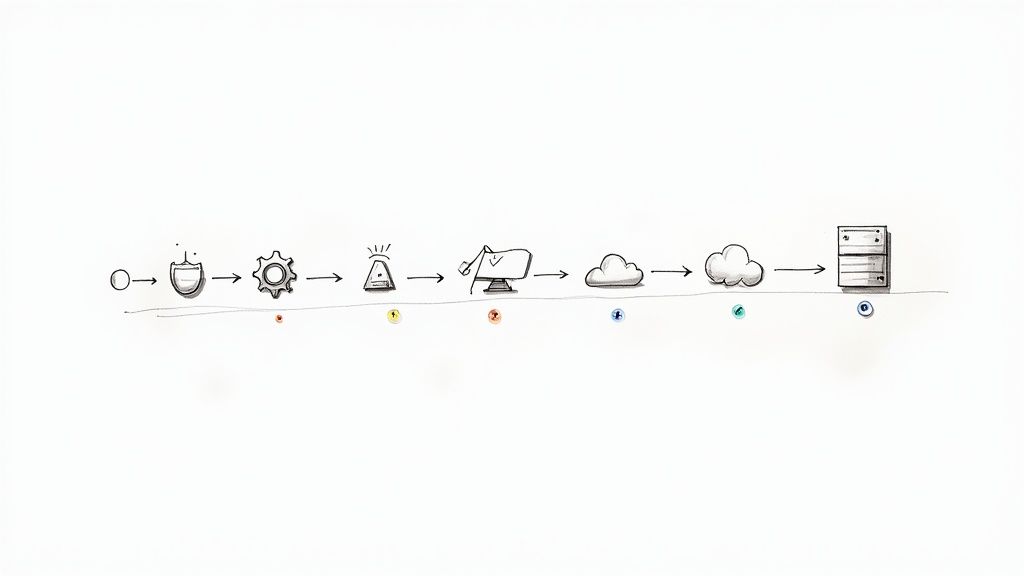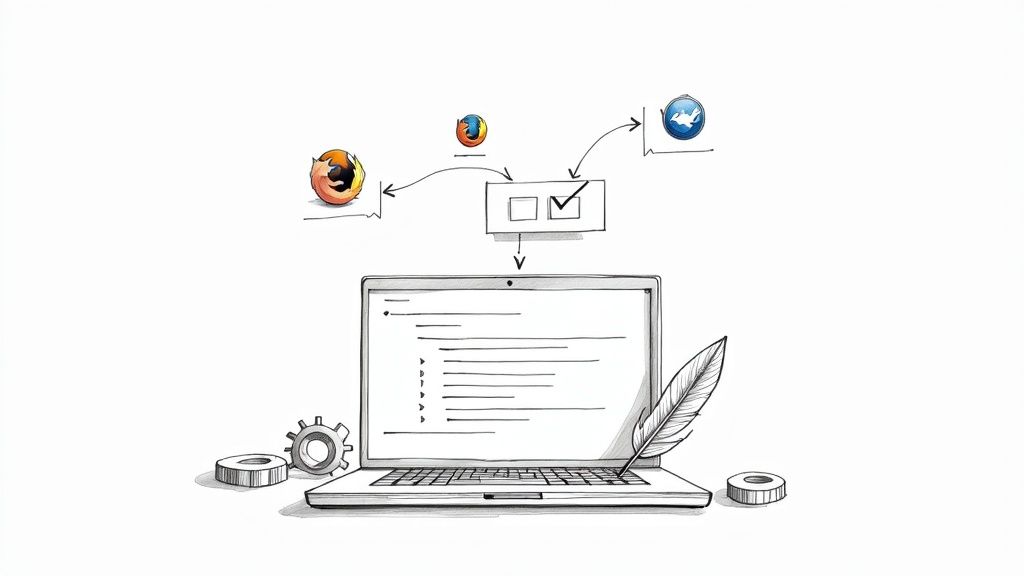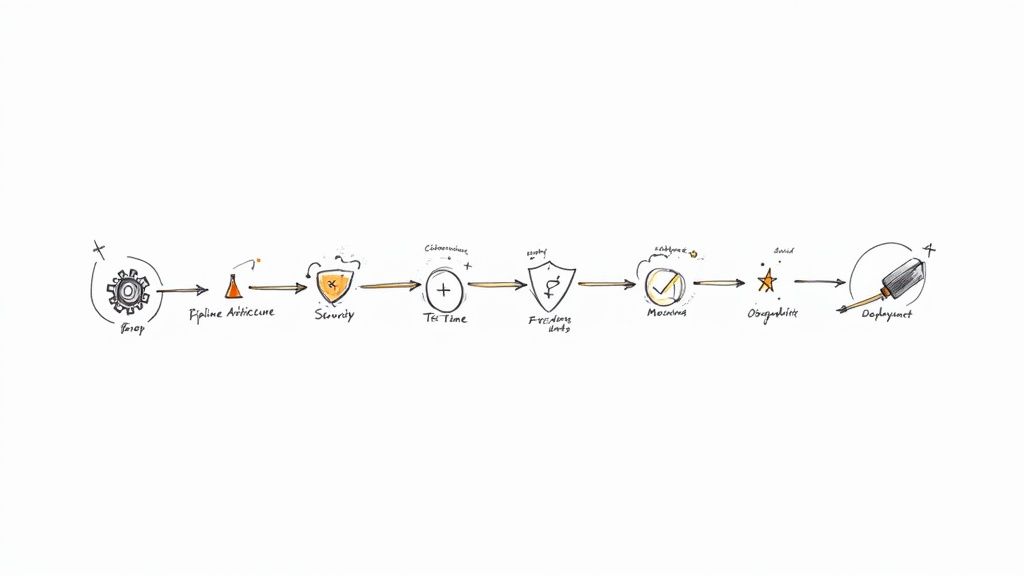Evolution and Management of Continuous Integration Costs

In today's fast-paced and highly competitive technology landscape, businesses rely on Continuous Integration to accelerate software development, enhance collaboration, and maintain high-quality codebases. While CI offers numerous benefits, it is essential to understand and manage the costs associated with its implementation and maintenance effectively. This article explores the evolution of CI costs, provides insights into efficient cost management strategies for organizations, and best-in-class tools.
The Evolution of CI Technologies and Associated Costs
Continuous Integration has witnessed significant evolution over the years, impacting the associated costs. Initially, CI was adopted primarily by larger enterprises due to the high upfront costs involved in setting up dedicated infrastructure and acquiring CI tools. However, with the emergence of cloud-based CI platforms and open-source solutions, the cost barriers have significantly decreased, making CI more accessible to organizations of all sizes.

Infrastructure Costs: from Hardware to Cloud
Traditionally, organizations had to invest in on-premises hardware, servers, and networking equipment to build CI infrastructure. This incurred substantial upfront costs and required ongoing maintenance expenses. However, the advent of cloud-based CI services, such as GitHub Action, AWS CodeBuild, Microsoft Azure DevOps, and GitLab CI/CD, has shifted the infrastructure burden to service providers. This evolution allows organizations to pay for CI infrastructure as a service, reducing upfront investments and scaling costs as per their needs.
Licensing and Pay-As-You-Use Costs
Initially, commercial CI tools required substantial licensing fees, making them cost-prohibitive for many organizations. However, the rise of open-source CI platforms like Jenkins has provided cost-effective alternatives. Open-source solutions often have no or minimal licensing fees, reducing the overall tooling costs associated with CI implementation.
Moreover and nowadays, many CI tools offer pricing based on the pay-as-you-use model. This model offers greater flexibility and adapts to the real needs of software teams. With this shift, many companies have been able to access this type of technology.
For example, AWS offers pricing based on actual usage of their services and charges by request, reports, and any other actions:
- AWS Hourly and Resource Granularity — $0.01 per 1000 UsageRecords per month;
- AWS Cost Explorer API — $0.01 for each request;
- AWS Budgets Reports — $0.01 per report;
- AWS Budgets — First two action-enabled budgets are free per month (subsequent budgets will cost you $0.10 daily).
Maintenance and Support Costs
Traditional CI infrastructure demands significant effort and resources to maintain, update, and address technical issues. This included costs associated with system administrators, software updates, and bug fixes.
However, the advent of cloud services has seen a number of managed services flourish, outsourcing the support and maintenance of CI tools. Indeed cloud-based CI platforms often handle maintenance and support as part of their service, reducing the burden on organizations and allowing them to focus on development rather than infrastructure management.
Efficient CI Cost Management Strategies: Best Practices
While the evolution of CI has made it more cost-effective, organizations still need to manage their CI costs efficiently. Here are some strategies to consider:

💵 Cost Optimization and Resource Allocation
Regularly analyze CI resource utilization to identify potential areas of cost optimization. Monitor resource usage patterns and adjust capacity to align with project requirements. Scaling infrastructure up or down based on demand can prevent unnecessary expenditure on unused resources.
🤖 Automated Testing and Deployment
Leverage automated testing and deployment pipelines to reduce manual effort and improve efficiency. Automated processes can minimize human error and streamline the CI workflow, thereby optimizing resource utilization and reducing time-to-market, ultimately lowering costs.
🧘♂️ Cost-Aware Development Practices
Promote cost-aware development practices within the development team. Encourage developers to optimize code efficiency, reduce unnecessary dependencies, and adopt cloud-native development principles. This approach ensures that CI processes consume fewer resources, resulting in cost savings.
🕵️♂️ Regular Audits and Cost Monitoring
Perform regular audits to evaluate CI costs and identify any potential areas of overspending or inefficiencies. Monitor cost trends and set up alerts or notifications to proactively address cost-related concerns. Cloud service providers often offer cost management tools and dashboards to monitor and analyze spending patterns.
🤝 Collaborative Cost-Conscious Culture
Cultivate a culture of cost-consciousness and collaboration within the organization. Encourage cross-functional teams to share best practices and cost-saving techniques. Foster open communication channels to discuss cost-related challenges and drive collective efforts to optimize CI costs effectively.
CI Costs Optimization: Best Tools
When it comes to tools to optimize your CI budget, we can break them down into two categories. The first is the general tools that allow you to manage all your expenses related to Cloud services. The second category is much narrower and only includes tools dedicated to your CI costs.
Cloud Costs Management Tools

To compile this list of the best cloud cost management tools, we based ourselves on our internal and personal experiences but also and especially on user feedback. For this, we relied on G2 and the ratings received by each tool.
- Datadog Cloud Cost Management: 4.3/5
- IBM Turbonomic: 4.5/5
- CloudZero: 4.5/5
- Amazon CloudWatch: 4.3/5
- Azure Cost Management and Billing: 3.8/5
- Densify: 4.6/5
- Virtana Optimize: 4.8/5
- Harness Cloud Cost Management: 4.7/5
- Apptio Cloudability: 4.3/5
- Flexera One: 3.7/5
- VMware Aria Cost by CloudHealth: 4.1/5
- CloudCheckr CMx: 4.1/5
- Nops.io:4.8/5
- AWS Cost Explorer: 4.4/5
- Finout: 4.6/5
- ProsperOps: 4.9/5
- Xosphere: 5/5
- Cast.ai: 4.8/5
- Kubecost: 5/5
CI Costs Management Tool: CI Optimizer
Mergify is launching a whole new tool: CI Optimizer.
This tool is designed to understand your CI budget. All your spendings are broken down, giving you the insights to reduce your CI costs.
From your CI provider's fees to the number of builds you're running each day, everything is accessible through a single dashboard.
It makes you able to identify areas where you could cut costs in a data-driven way.

CI Optimizer integrate seamlessly with your existing CI tools giving you all the metrics you need to optimize your CI costs.

Want to try CI Optimizer and help us make it perfect? Register now for our private beta.
Continuous Integration has transformed the software development landscape, enabling faster delivery cycles, improved code quality, and enhanced collaboration. As organizations adopt CI practices, understanding the evolution and management of associated costs becomes vital. By leveraging cost optimization strategies, embracing automation, and fostering a cost-conscious culture, businesses can effectively manage CI costs while reaping the benefits of continuous integration.





